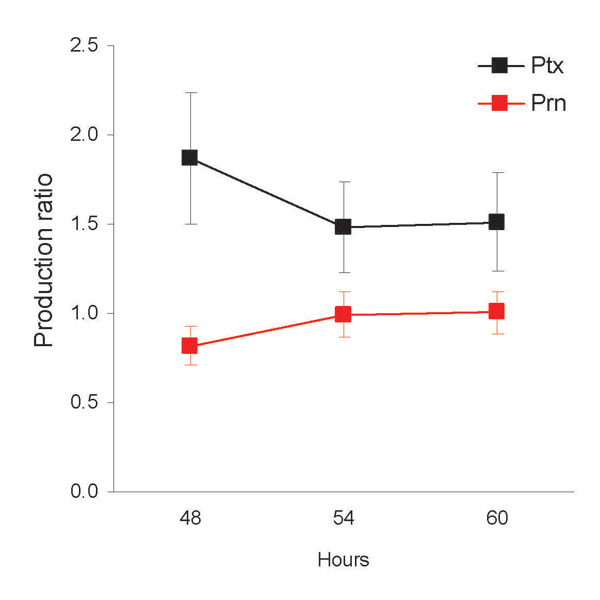Volume 15, Number 8—August 2009
Research
Bordetella pertussis Strains with Increased Toxin Production Associated with Pertussis Resurgence
Figure 3

Figure 3. Production of pertussis toxin (Ptx) and pertactin (Prn) by pertussis toxin promoter 1 (ptxP1) and ptxP3 strains. Strains were incubated for the 48, 54, and 60 h, after which the amount of Ptx and Prn was determined by ELISA. The production ratio was calculated as follows: ptxP3 strain values/ptxP1 strain values; 8 strains, 4 ptxP1 strains and 4 ptxP3 strains, were used. The experiment was performed 3 times. Error bars indicate 95% confidence intervals. The Ptx and Prn ratios were significantly different from 1 (p<0.0001 and 0.03, respectively).
Page created: December 06, 2010
Page updated: December 06, 2010
Page reviewed: December 06, 2010
The conclusions, findings, and opinions expressed by authors contributing to this journal do not necessarily reflect the official position of the U.S. Department of Health and Human Services, the Public Health Service, the Centers for Disease Control and Prevention, or the authors' affiliated institutions. Use of trade names is for identification only and does not imply endorsement by any of the groups named above.